Since launching its new Woodland picnic area playground in mid-2023, Royal Botanic Gardens Cranbourne has welcomed more visitors.
The nature-based playground is part of an improvement project at the gardens and was supported by a $3.3 million investment from the Regional Tourism Investment Fund.
The grant funding supported the redesign of the playground to better reflect the values of the Royal Botanic Gardens Victoria. The changes enhance the relationship to its natural environment, plants and animals, which inhabit the area.
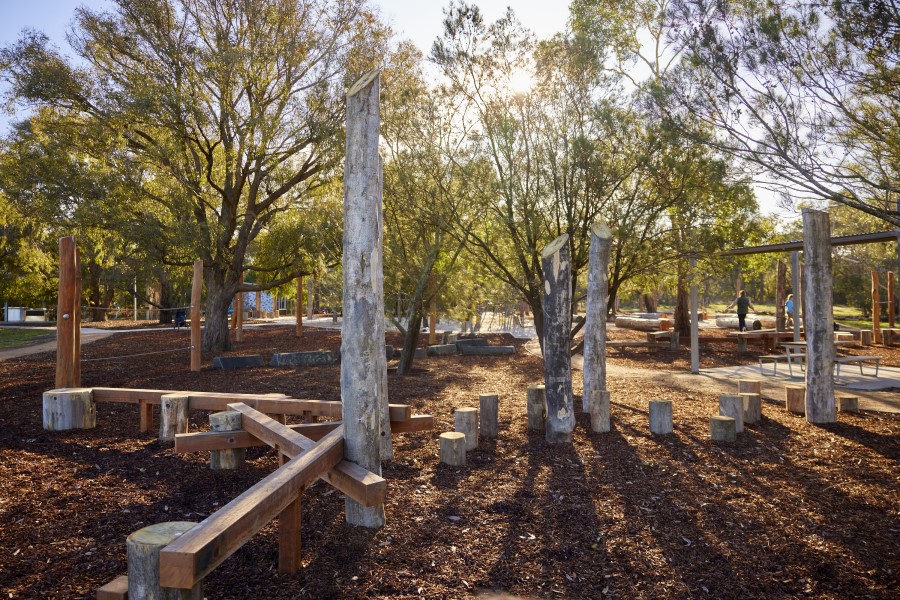
Credit: Royal Botanic Gardens Victoria
The new playground merges with the surrounding bushland and includes natural wonders for children to explore and play. It features giant logs and a fallen tree for climbing and searching for wombat tracks in the new sand play areas.
Made from salvaged materials from the gardens, as well as locally sourced materials, the space respects the surrounding environment with the approach ‘leave only footsteps, take only memories’.
The bushland area of the gardens is commonly less visited than the Australian Garden section. Since the playground was renewed, there has been a rise in visitors to the bushland area.
Inspired by play
Landscape architect Andrea Proctor and her team designed the new space and was inspired by the way children play in bushland.
‘We thought about the way children play in the bush - exploring, balancing, splashing, listening and watching, collecting, making and climbing - and designed play features that imitated this,’ Andrea said.
‘Regular play spaces are very different to the bush and should be. This is a managed space which shows you what fun you can have in the bush, but you need to be respectful and sensible.’
Due to the high conservation value if the area, Andrea and her team were deliberate with their plant choices for the new play space. It now has over 450 indigenous plant species and many native animals.
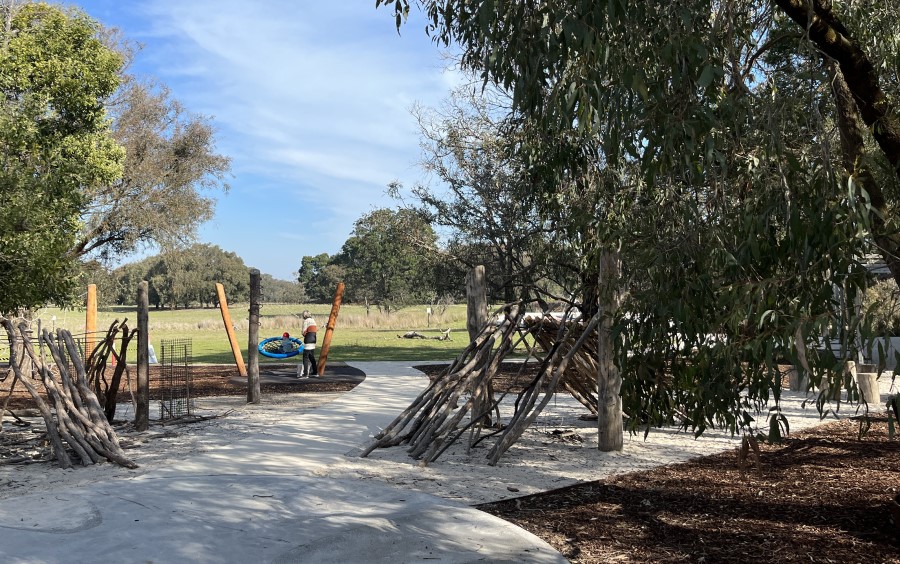
Credit: Andrea Proctor
‘We needed to be careful as kangaroos and wallabies tend to eat out any new plants. So, we designed the space to run under the existing trees, providing natural shade.
‘We were inspired by natural materials such as banksias, casuarinas and animal tracks in the design details and used plant material found on site to press patterns into the path.
‘There are also possum and bandicoot tracks hidden for kids to find, and in the early morning you often find natural animal tracks the sand areas,’ she said.
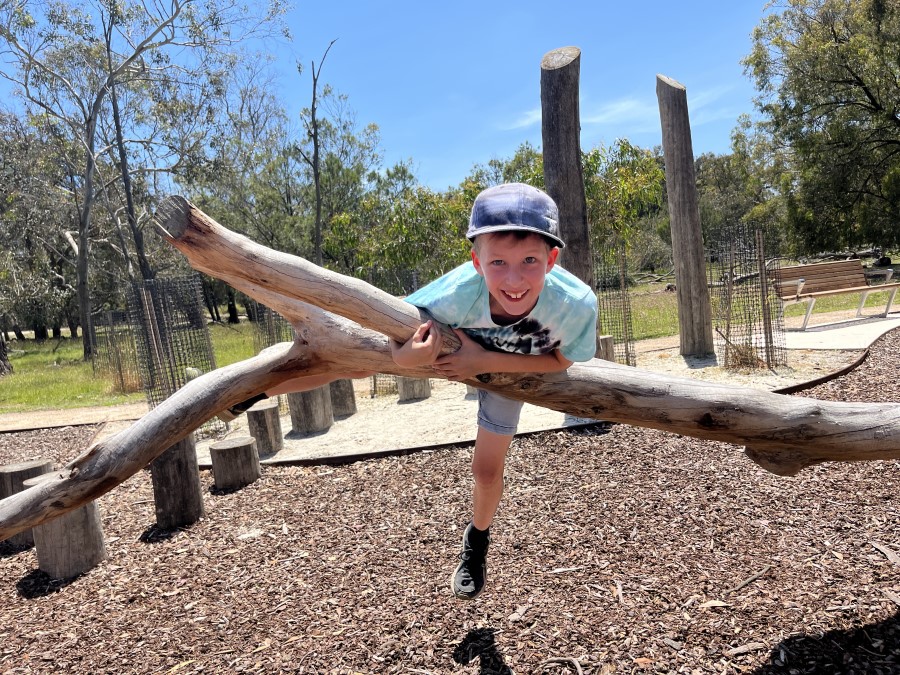
Credit: Andrea Proctor
Multi-generational visitors
It’s not just younger visitors to the gardens benefiting from the upgrade. The playground has been designed to cater for all ages and skill level and arranged for multi-generational groups.
Additional features include an open classroom, and tactile lounging nets designed for teenagers. The design also encourages younger children to play closer to their parents.
With Cranbourne being home to a large migrant population, the gardens are a popular meeting point to host families visiting from overseas.
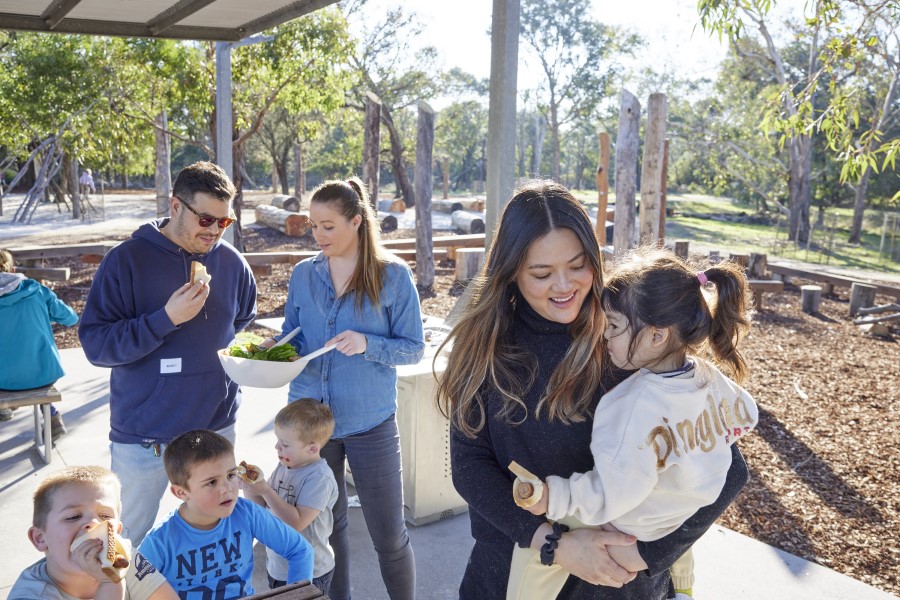
Credit: Royal Botanic Gardens Victoria
‘During our early discussions, we were told this was a popular spot for intergenerational family gatherings, where you may have three or more generations meeting to use the site,’ Andrea said.
‘While play was important, we knew ball games were also popular in the central area. So, we needed to appeal to teens, adults, and older adults too.
‘We deliberately embraced the central lawn area for ball sports and placed the lounging nets (particularly for teens) so they were good vantage points for watching games and being near the picnic areas without being too close.’
Improved features
Safety and accessibility upgrades also feature throughout the gardens. These upgrades provide an inclusive experience for everyone, including school groups and visitors with mobility support needs.
Existing facilities including the Rockpool Pavilion, Riverwalk Amphitheatre, Ponding Platform and the Ian Potter Lakeside Precinct Shelter also received shade and shelter upgrades. Together they provide more space for visitors to gather, dine and participate in learning programs.
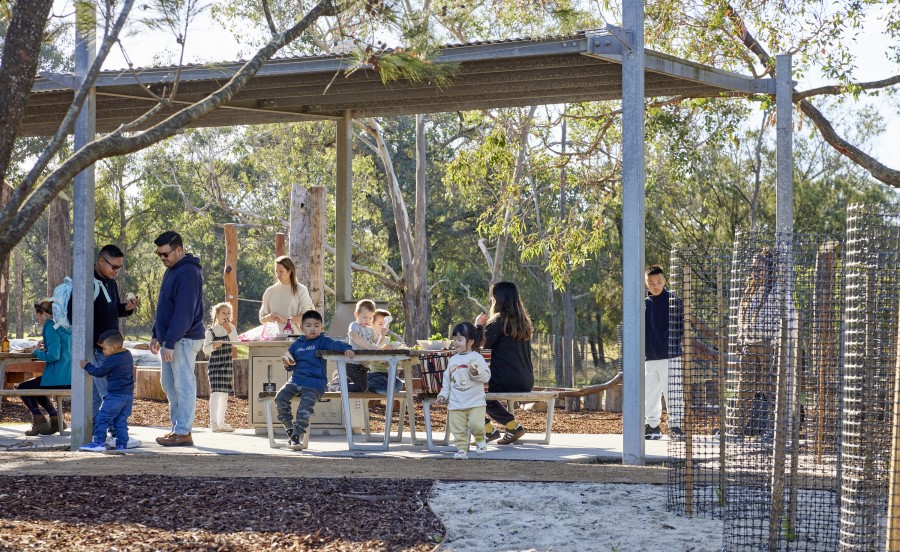
Credit: Royal Botanic Gardens Victoria
The project also created 38 full-time jobs during construction.
The new facilities cement the Gardens’ strong reputation as a leading sustainable nature-based tourism destination for the region. It encourages visitors to get in touch with nature and enjoy the beauty and diversity of Australian landscapes and flora.
Funding has been used to update several areas at the Garden’s including the kiosk, carparks and signage and wayfinding across the gardens.
The Royal Botanical Gardens Cranbourne delivers on the nature-based tourism pillar of the Experience Victoria 2033 strategic plan.


